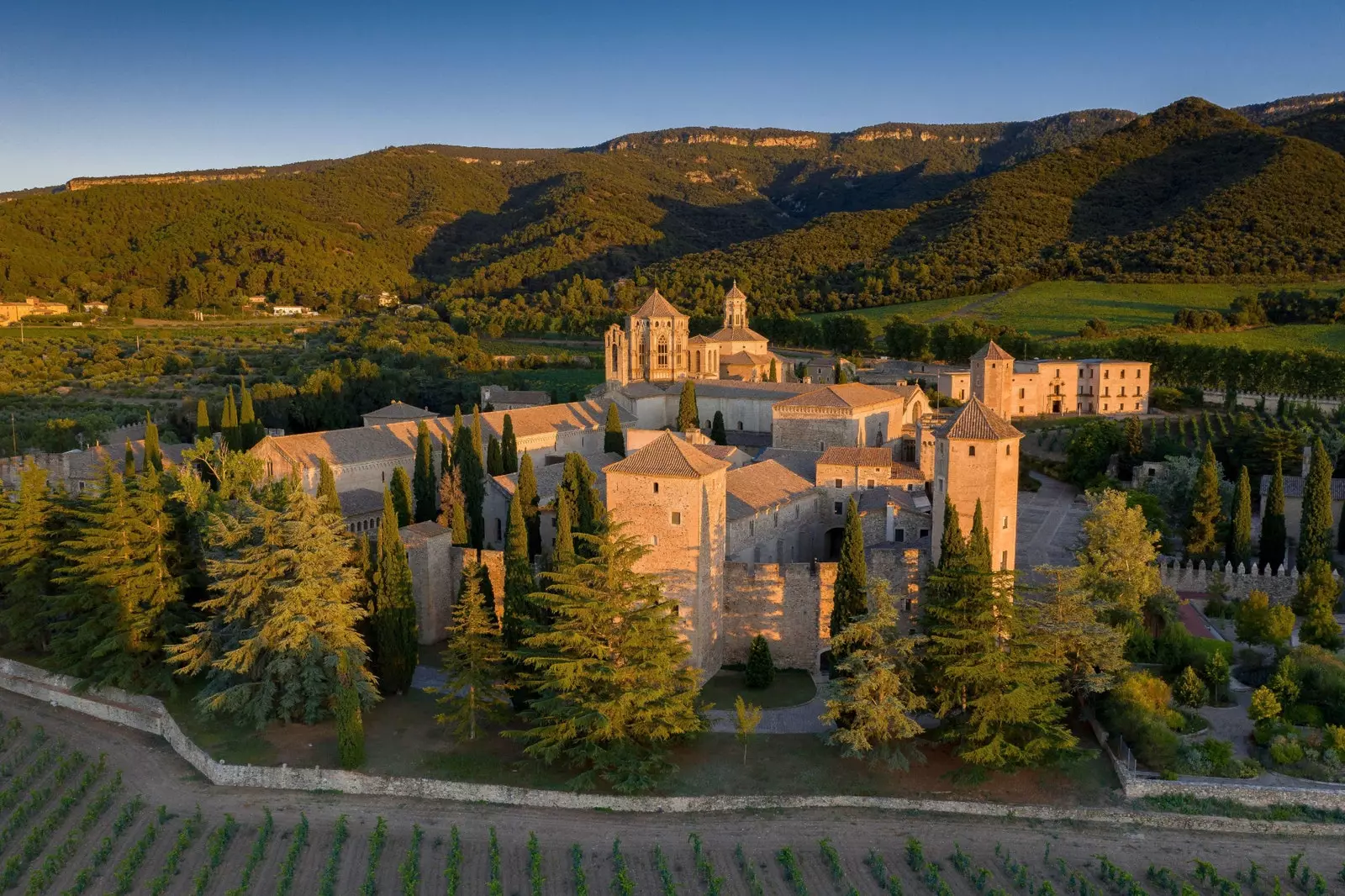
Royal Monastery of Santa María de Poblet, at sunset.
Although it seems that, little by little, we are returning to normality protected by the positive effect of the vaccines, as happened last year, This summer, outdoor destinations in national territory will prevail again on medium and long distance trips. Far from being something worrying, it should be taken as a great opportunity to discover the hidden treasures of Spain. One of them is undoubtedly the Prades Mountains Natural Park.
The Prades mountains are formed by a compendium of irregular saws, upholstered with green forest formations and distributed throughout the Catalan counties of the Conca de Barberà, Priorat, Baix Camp and l'Alt Camp.
They are not very high mountains –its highest peak, Tossal de la Baltasana, barely exceeds 1,200 meters above sea level–, which makes them very accessible, offering unlimited possibilities for hiking and other outdoor activities to any type of traveler.
But since man does not live by exploring nature alone, the Prades mountains are also dotted with medieval towns, creepy abandoned places, prehistoric caves, impressive cistercian monasteries and almost inaccessible hermitages, all of it seasoned with a wonderful gastronomy.
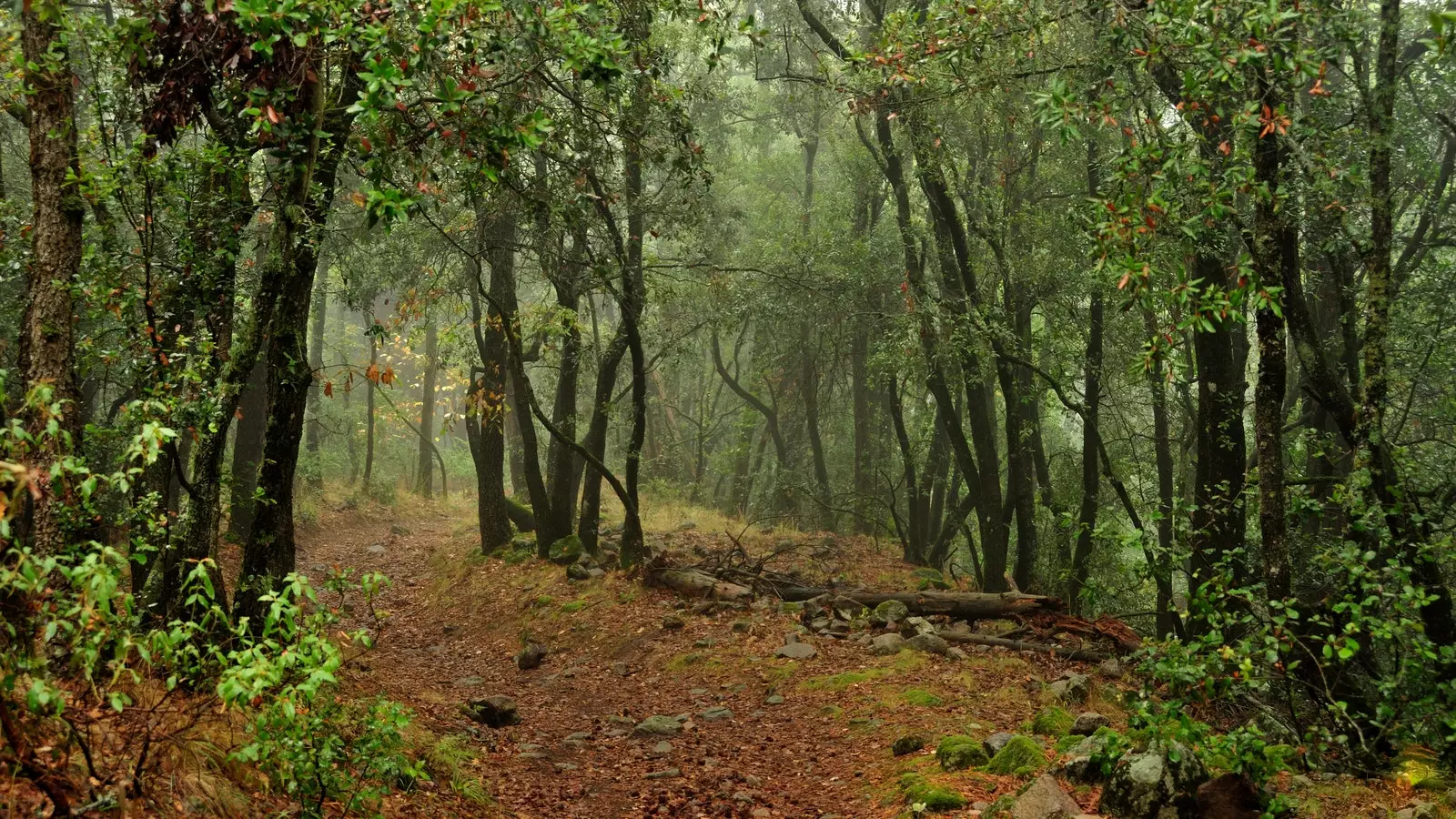
Forest of Poblet, Tarragona.
HIKING AND OUTDOOR ACTIVITIES
There are various options available to those who want to enjoy the dense and varied nature of the Prades mountains.
Mountain bike lovers will find traces of different hardness and length, from routes suitable for the whole family to a three-day circuit that thoroughly explores almost the entire natural park. One of the most popular is the circular one that starts from the town of Prades and passes through the top of Coll del Bosc, Borrianes and the beautiful landscape of the ravine of Viern before returning to the starting point.
That same route can be done on foot, but many hikers -especially those who travel as a family- opt for the original mycological route which is in the beautiful Poblet forest.
This trail starts from the Castellfollit forest house and, along its circular route of 6.5 km (although there is a short version of only 3 km), different types of mushrooms painted by the artist Genís Colell appear using the trunks of different trees.
The best time to do it is in autumn, during the mushroom picking season, as there more than 700 different species on the floor of this magical forest inhabited by Scots pines, oaks, holm oaks, lime trees, hazel trees, holly trees and maples.
horseback riding and kayak excursions –especially in the Siurana reservoir– are other activities that allow you to feel an intense contact with the nature of Prades.
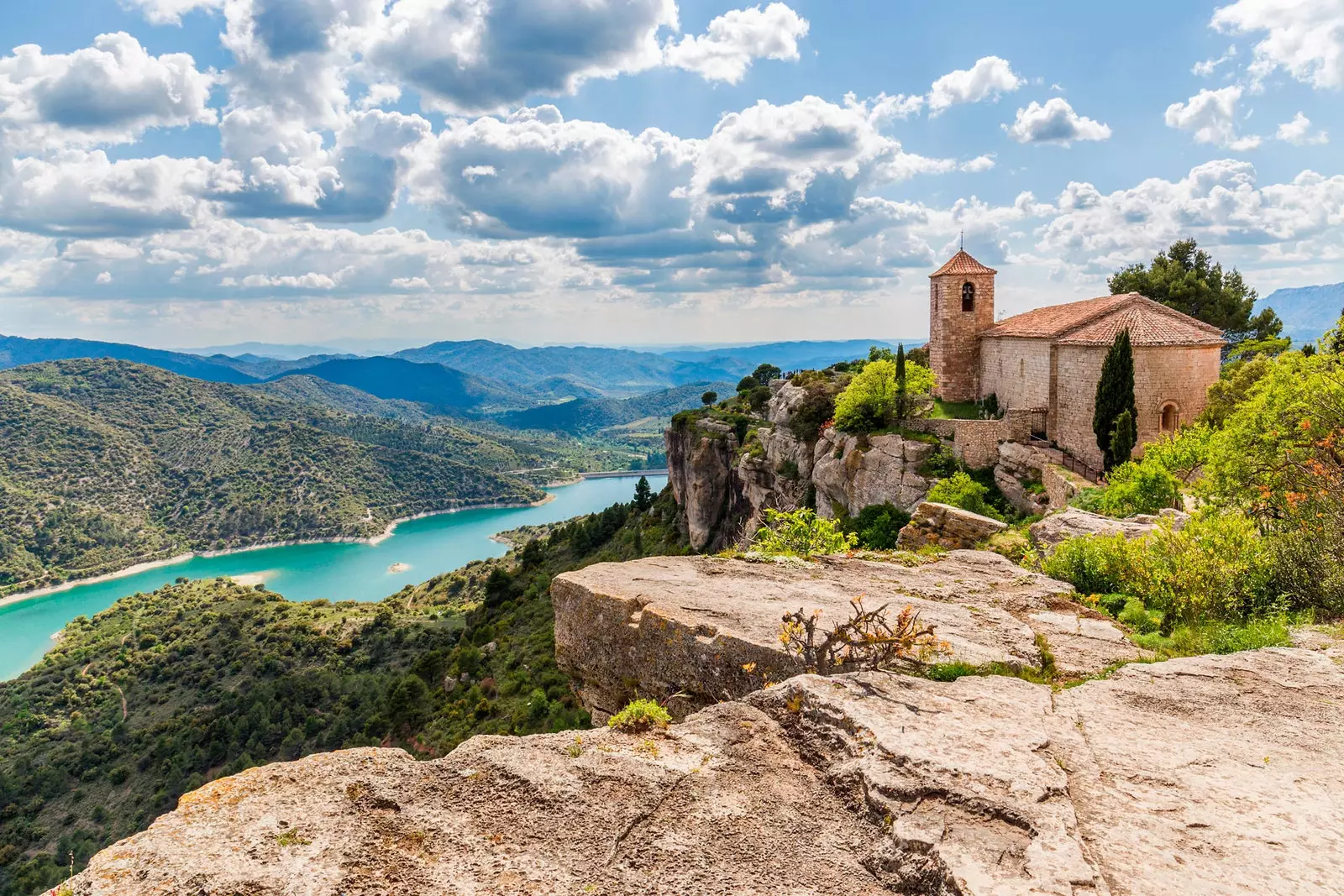
Siurana and its reservoir.
PREHISTORIC AND TERRIBLE CAVES ABANDONED VILLAGES
Perhaps that same nature would be strange if the hominids that inhabited the area during the Palaeolithic saw it now. **
They left their personal mark in a place as fascinating and mysterious as the caves of Espluga de Francolí, where the Font Major Cave Museum is located.
Part of the cave – some 500 meters – can be visited, showing cave paintings and housing an original and educational museum, great for a family visit, showing what it was like a real-scale Neolithic village . The entire cavity contains a network of underground galleries which has a length of 3.6 km, being one of the seven longest caves in the world.
For the most daring, they organize caving adventures.
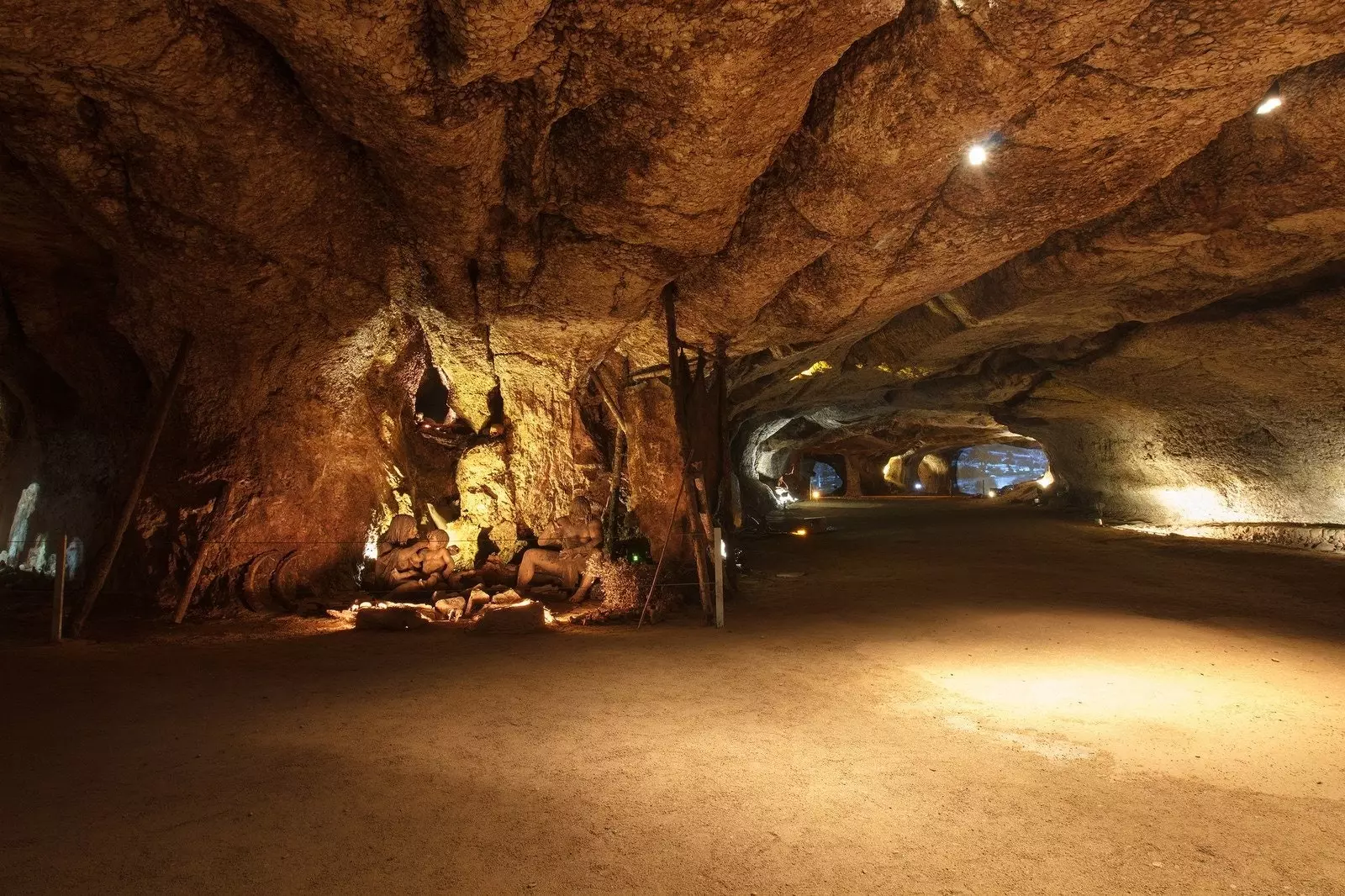
Cave Museum of the Font Major, Tarragona.
It is also necessary to have tempered nerves and daring to visit the creepy ruins of the town of La Mussara. Its crumbling stone houses have been devoured by a nature that reclaims its territory after being abandoned by the human being, in the 50s of the last century, because of the crisis generated by phylloxera and a great drought.
Only the one left standing skeleton structure of the church of Sant Salvador, in which, according to some witnesses, the ghostly figures of ancient monks. Mysterious disappearances of hikers, curses, beings from other dimensions and other fantastic stories have made Iker Jiménez himself fixed his gaze on this abandoned town from the Sierra de Prades.
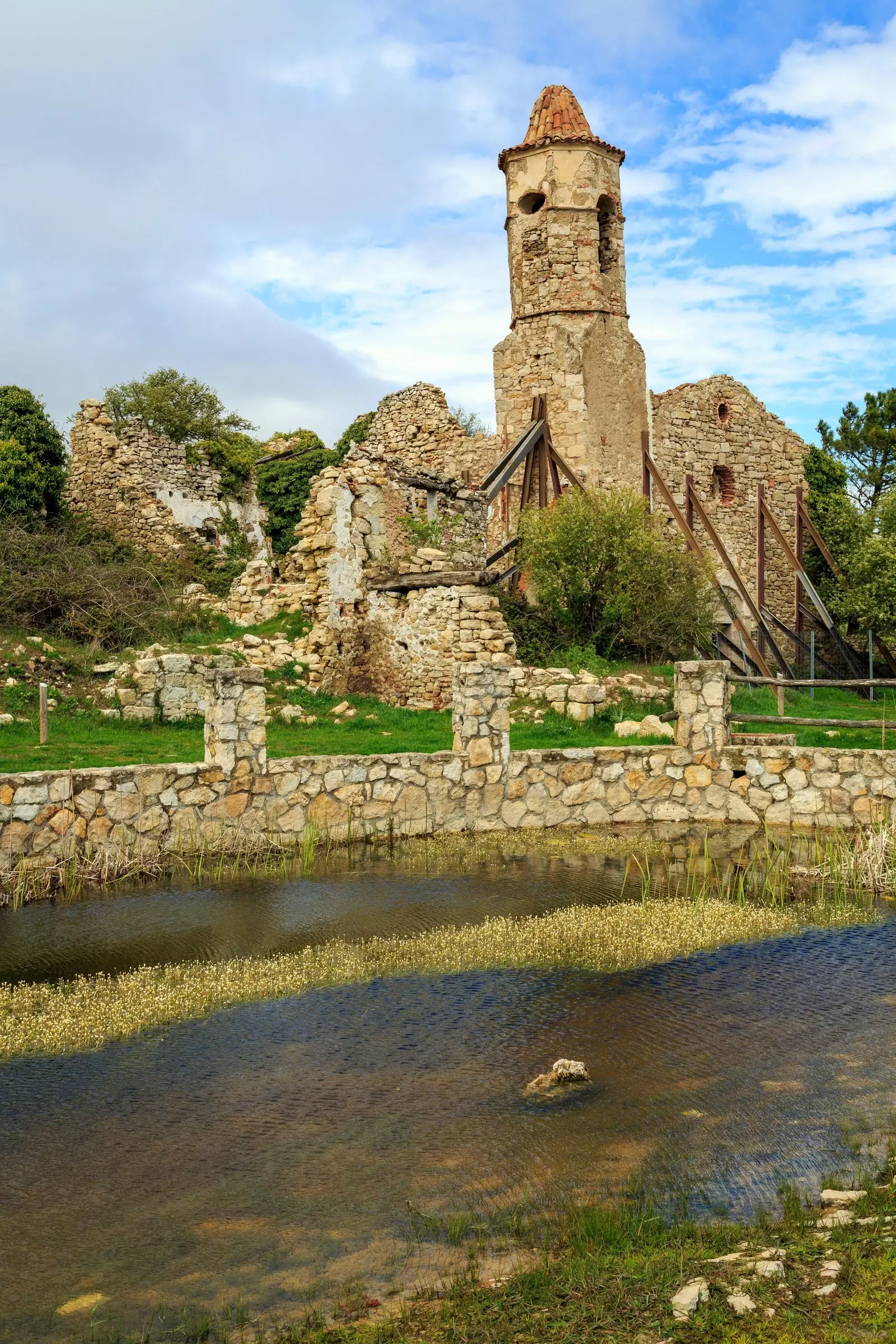
Ruins of the old abandoned town of La Mussara, Tarragona.
CHARMING VILLAGES AND THE FOOTPRINT OF THE CÍSTER
Much less dark, but also tragic, are the legends that still resonate in the stone houses of the small town of Siurana. Over there, an Arab castle and a Romanesque church overlook a spectacular precipice 250 meters deep, making it one of the most beautiful viewpoints in Spain. At the feet are the blue waters of the Siurana reservoir, surrounded by the green of the forests , and, in the distance, the mountains.
It is a perfect place to unwind and relax, and he too Every year, hundreds of climbers from all over the world attend finding, in its surroundings, some of the best limestone walls in Spain to practice your favorite sport.
Another town very visited by travelers who come to Prades is Capafonts. In addition to his dozens of sources of fresh and clear water, The Parish Church of Santa María (18th century), the Mare de Déu de Barrulles Hermitage (12th century) and its spectacular natural surroundings attract the gaze of the traveller.
Not far from there, about 27 km, is the Royal Monastery of Santa María de Poblet. Declared a World Heritage Site by UNESCO in 1991, Its construction was promoted, in the 12th century, by Ramón Berenguer IV, Count of Barcelona . Royal pantheon of the extinct Crown of Aragon, reached the zenith of its splendor in the fourteenth century, falling into oblivion in the nineteenth century, as a result of the famous confiscation of Mendizábal.
Thanks to a profound renovation, carried out in the 30s of the last century, the monastery was once again used – to this day – by the monks of the Cistercian order.
Worth visit its beautiful and elaborate main cloister, In addition to the church, where the royal tombs of historical figures as important as Peter the Ceremonious and Jaime I the Conqueror.
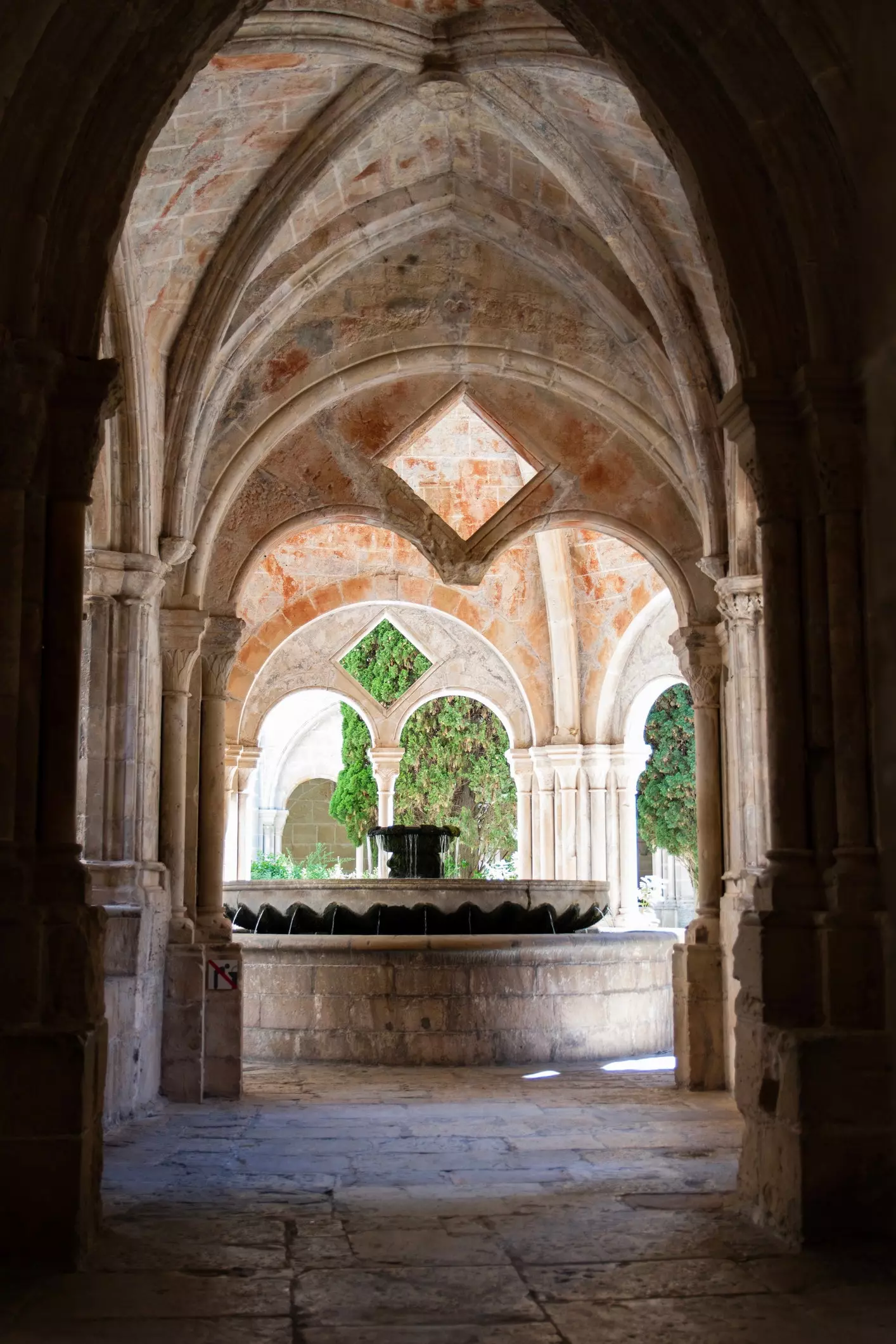
Fountain in the cloister of the Royal Monastery of Santa María de Poblet.
RELAXATION AND GASTRONOMY
After so many visits and walks, you may fancy a moment of relaxation and enjoy good food.
To relax and cool off, nothing better than taking advantage of the natural water pools found in Toll de l'Olla and La Febró (Els Gorgs de La Febró, in Catalan), ideal places to prepare a picnic during the hot summers of Tarragona.
As for the gastronomy of Prades, it is based on dishes made with the raw materials of the land, especially game meat and garden products, highlighting the Prades potatoes, that enjoy Protected Geographical Indication.
The Brasserie La Taberna (Prades) and El Grévol (Capafonts) are two good places to taste the best dishes in Prades. A total destination that has something for every traveler.
